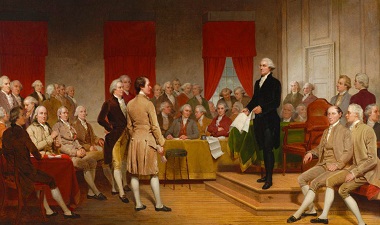Executive Summary Of Article V Convention Report
 Gerard N. Magliocca summarizes his detailed review of the history and tradition of state legislative petitions for a second national constitutional convention and the use of state conventions to ratify constitutional amendments proposed by Congress. Magliocca is Distinguished Professor and Lawrence A. Jegen III Professor, Indiana University, Robert H. McKinney School of Law.
Gerard N. Magliocca summarizes his detailed review of the history and tradition of state legislative petitions for a second national constitutional convention and the use of state conventions to ratify constitutional amendments proposed by Congress. Magliocca is Distinguished Professor and Lawrence A. Jegen III Professor, Indiana University, Robert H. McKinney School of Law.
Read Full Biography
This Report discusses the history and tradition of state legislative petitions for a second national constitutional convention and the use of state conventions to ratify a constitutional amendment proposed by Congress.
There are many unanswered questions about how a second national convention would be organized if called by two-thirds of the states as Article V of the Constitution provides. For example, could state legislatures restrict the scope of the amendments that a new convention may consider? Could they choose how their state delegates would be selected? Could Congress enact legislation regulating the convention’s deliberations? The uncertainty surrounding these basic convention ground rules makes many people uneasy about invoking this ultimate constitutional authority.
Nevertheless, on three occasions the number of state petitions came close enough to the two-thirds threshold to prompt action from Congress. The first involved the Seventeenth Amendment, which provided for the direct popular election of Senators and was proposed by the Senate only after more than thirty states requested a constitutional convention on that issue. The second involved the Supreme Court’s one-person, one-vote decisions in the 1960s, which required many state legislatures to be reapportioned and triggered over thirty petitions from them asking for a convention to restore the status quo ante. Congress considered but rejected a constitutional amendment on reapportionment in response to these requests. Finally, by the 1980s more than thirty states were asking for a constitutional convention to propose a balanced budget amendment, and Congress reacted by enacting broad anti-deficit legislation.
The practice of using state conventions rather than state legislatures to ratify an Article V amendment is limited to one precedent—the Twenty-First Amendment repealing Prohibition. This method was chosen because malapportioned state legislatures overstated support for Prohibition and because Congress felt that the people should be given the most direct voice possible on consideration of a proposal that affected their daily lives.







